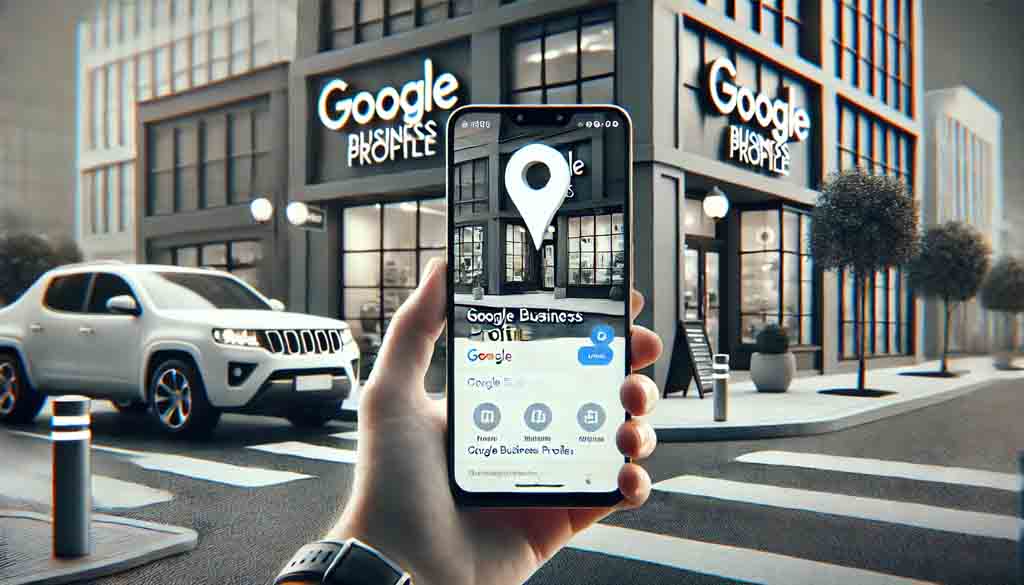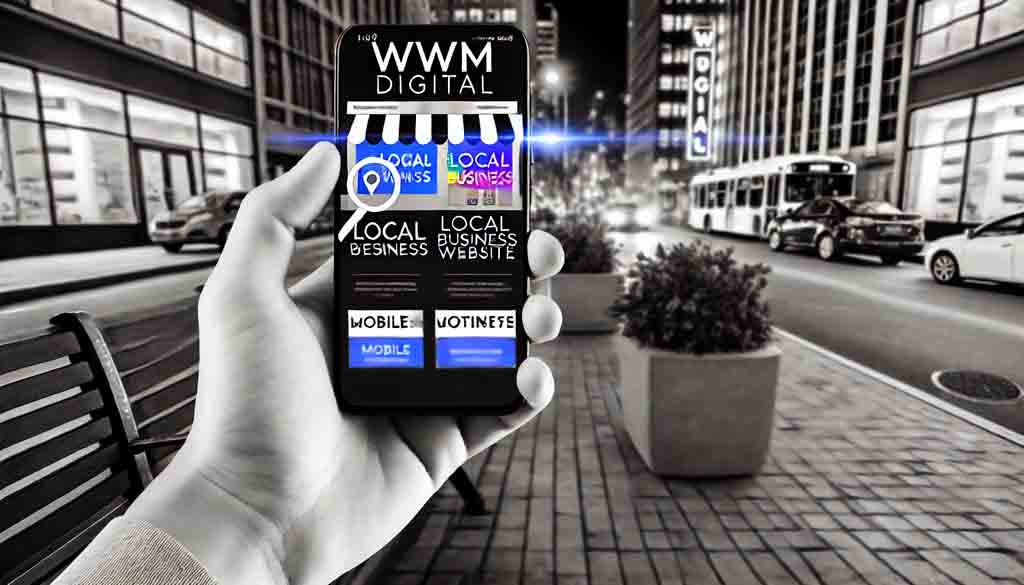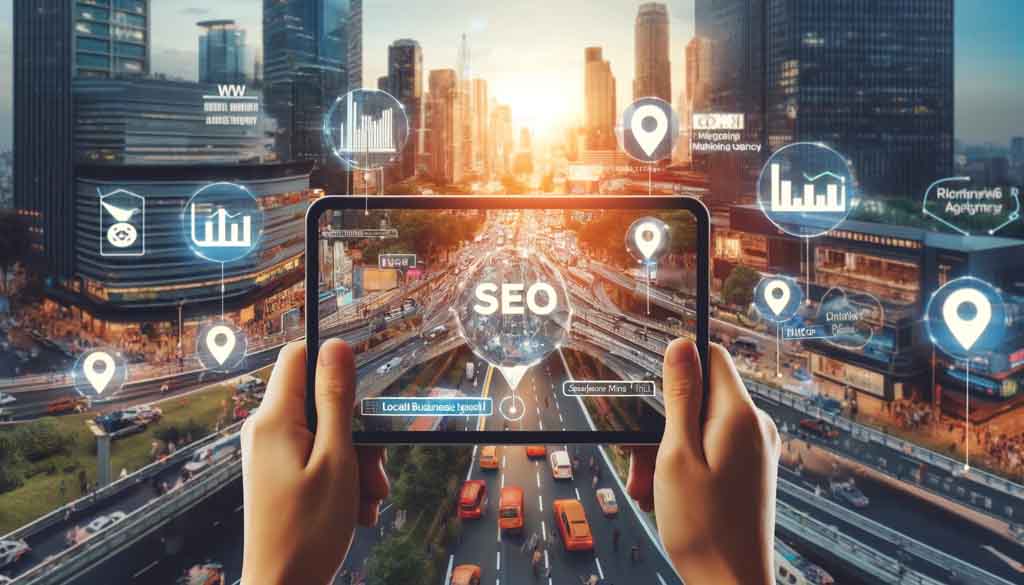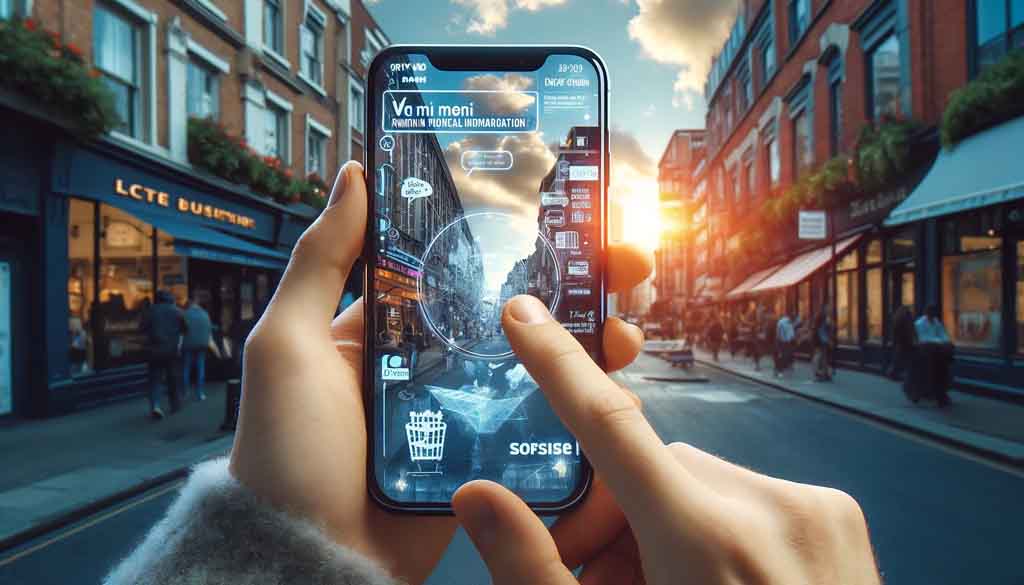
The Importance of Local SEO in 2024
In 2024, the landscape of Local SEO is more dynamic and essential than ever, particularly for small to mid-sized enterprises that depend on local customers. Local SEO isn’t just about reaching a broad audience; it’s about connecting with people in your vicinity who are actively searching for your services and products. From increased mobile search volume to evolving customer expectations, local SEO has proven to be the cornerstone of a successful digital marketing strategy for local businesses.
Google, the leader in online search, constantly tweaks its algorithm to improve the user experience, which has profound implications for businesses focused on local SEO. This year, changes include better handling of localized and hyperlocal search queries, giving more weight to reviews and reputation, and prioritizing businesses that leverage AI to enhance customer interactions. These updates are aimed at making search results even more relevant and personalized, ensuring that local businesses have a chance to stand out.
Local SEO strategies must therefore adapt, with businesses ensuring they meet these new standards.

Mistake #1: Neglecting Google Business Profile Optimization
A fully optimized Google Business Profile (GBP) is an invaluable asset for businesses seeking local visibility, yet it’s a common pitfall for many. In 2024, Google Business Profile has expanded its influence, especially as local searches continue to dominate mobile devices. An optimized GBP not only boosts visibility in search results but also improves trust and conversion rates, with 76% of local searchers visiting a business within a day if it’s well-presented in search results, according to recent studies.
Common Issues with Google Business Profile Optimization
Many businesses leave their profiles incomplete or outdated, which can directly impact customer perceptions and rankings. Common issues include:
- Incomplete Information: Missing business hours, incorrect addresses, or vague descriptions create obstacles for potential customers.
- Outdated Photos and Poor Quality: Businesses that fail to update images are missing an opportunity to engage customers visually.
- Inaccurate or Missing Categories: Specific categories help Google understand your business and connect you with relevant searchers.
- Unclaimed Profiles: Some businesses still haven’t claimed their Google listing, reducing control over critical information.
Step-by-Step Guide to Optimizing GBP in 2024
- Claim and Verify Your Business: Ensure ownership of your GBP by claiming and verifying it through Google, which provides you full control.
- Complete Business Information: Provide detailed information, including business hours, address, contact info, and website link. Regularly update this data.
- Select the Right Categories: Choosing relevant categories helps Google accurately place your business in local search results. Specific categories are better than broad ones.
- Utilize High-Quality Photos: Invest in professional photos showcasing your location, products, and team. Regular updates keep your profile fresh.
- Encourage Customer Reviews: Reviews increase visibility and credibility. Respond to both positive and negative feedback to foster customer trust.
- Post Regular Updates and Offers: Posting news, events, or special offers keeps your business engaged with local customers and helps drive conversions.
By avoiding common mistakes and taking these steps, businesses can leverage Google Business Profile to gain visibility, build trust, and ultimately drive foot traffic from local searches.

Mistake #2: Ignoring Mobile-First Optimization
Mobile-first indexing, a standard introduced by Google in recent years, now plays a significant role in search rankings and user experience. With over 60% of web traffic coming from mobile devices, optimizing for mobile is no longer optional—it’s essential for businesses seeking to thrive in local SEO. When websites aren’t optimized for mobile, they risk higher bounce rates, lower rankings, and missed opportunities to convert mobile searchers who are actively looking for local businesses. Google’s algorithms favor mobile-friendly sites, making it critical for businesses to prioritize mobile optimization to stay competitive.
Common Issues with Mobile Optimization
Slow Loading Times: On mobile, users expect speed. Studies show that a one-second delay in page load time can reduce conversions by up to 20%. Businesses with slow-loading mobile sites risk losing impatient customers, especially when competitors offer faster alternatives.
Non-Responsive Designs: Non-responsive websites that fail to adjust to various screen sizes can frustrate users, leading to high bounce rates. Responsive design ensures that users have a seamless experience, whether on a tablet, smartphone, or desktop.
Poor User Experience: Complicated navigation, small text, and excessive content can make it difficult for mobile users to engage. A website that’s easy to navigate on mobile devices will encourage users to explore further, potentially leading to higher engagement and conversions.
Actionable Tips for Mobile-First Optimization
Optimize Page Speed: Compress images, enable browser caching, and use lazy loading to enhance loading speeds. Tools like Google’s PageSpeed Insights provide actionable recommendations tailored for mobile devices.
Use Responsive Design: A responsive design automatically adjusts to the screen size and orientation, offering a consistent experience across all devices. Platforms like WordPress and Shopify have built-in responsive themes, making it easy to implement.
Simplify Navigation Structure: Focus on intuitive and streamlined navigation. Use dropdown menus sparingly and keep essential information accessible. A simplified menu structure improves usability and ensures that users find what they need quickly.
By optimizing for mobile-first, businesses can improve their visibility in local searches, drive more foot traffic, and offer a seamless experience that resonates with today’s on-the-go users.

Mistake #3: Overlooking Localized Content Creation
Creating localized content tailored to specific regions is a vital yet often underutilized strategy in local SEO. Localized content allows businesses to speak directly to community interests, needs, and issues, making the brand more relatable and valuable to nearby audiences. Recent studies show that localized content can increase engagement rates by up to 80%, as consumers are more likely to interact with businesses they feel connected to on a local level.
Common Issues with Localized Content Creation
Generic Content: Many businesses produce generic content that fails to address the unique interests of their local audience, making it less likely to resonate.
Ignoring Local News and Trends: Overlooking local news, events, and seasonal changes limits a business’s ability to engage the community.
Lack of Geo-Specific Keywords: Without keywords that target the local area, content may miss opportunities to rank in local search results, reducing visibility to the intended audience.
Effective Strategies for Localized Content Creation
Write About Community Events: Covering local festivals, events, or charity drives is a great way to connect with the community. Not only does this create relevant content, but it also shows support for local happenings, which can boost brand image and loyalty.
Address Local Pain Points: Businesses can position themselves as valuable resources by addressing issues specific to the area. For instance, a roofing company in a hurricane-prone area could write about best practices for stormproofing homes.
Use Geo-Specific Keywords: Incorporating local keywords, such as city names or neighborhoods, increases the likelihood of appearing in local searches. Google is increasingly adept at recognizing these phrases and connecting users with relevant, nearby businesses.
Localized content helps businesses capture and hold the attention of local consumers while improving their local SEO rankings. By building content that reflects local life, businesses can increase their reach and make a meaningful impact on their communities.

Mistake #4: Inconsistent NAP (Name, Address, Phone Number) Information
Consistency in NAP (Name, Address, Phone Number) data is fundamental to local SEO success, yet it remains one of the most overlooked aspects in many local campaigns. Accurate NAP information across directories ensures that search engines and customers can easily locate and trust a business. Studies show that 80% of customers lose trust in local businesses with incorrect contact details, highlighting the importance of this information for customer relationships and online visibility.
Common Issues with NAP Consistency
Outdated Information: Address changes, new phone numbers, or rebranded names may go uncorrected across platforms. This inconsistency confuses search engines and potential customers, impacting rankings and customer trust.
Platform Discrepancies: Businesses often neglect to update details on social media, directories, or third-party sites, leading to conflicting information.
Formatting Differences: Even minor variations, like abbreviating “Street” as “St.” in one directory but spelling it out in another, can impact local SEO.
Solutions for Maintaining Consistent NAP Information
Conduct Regular Audits: Regularly verify and update NAP information across all platforms to ensure accuracy. Audits can be performed quarterly or after significant changes, such as moving to a new location.
Use a Centralized Checklist: Maintain a master list of all platforms where your business is listed, including social media, Google Business Profile, Yelp, and industry-specific directories. This checklist should include fields for name, address, and phone number formats to keep consistency.
Leverage Tools for Accuracy: Tools like Moz Local, Yext, and BrightLocal can streamline the process, scanning for inconsistencies and automating updates across directories.
Ensuring consistent NAP information not only strengthens local SEO rankings but also enhances customer trust by offering reliable, easy-to-access contact information across the web.

Mistake #5: Failing to Encourage and Manage Customer Reviews
Customer reviews have become one of the most powerful factors influencing local SEO rankings and consumer decisions. With nearly 90% of consumers reading online reviews before visiting a business, reviews not only drive foot traffic but also significantly affect search engine results. Google considers reviews a ranking factor, meaning that businesses with active, positive reviews can see higher visibility in local searches. Despite this, many businesses neglect to encourage or manage reviews, missing an opportunity to enhance their online reputation and SEO performance.
Common Issues in Review Management
Not Asking for Reviews: Many satisfied customers are willing to leave a review but often need a nudge. Without prompting, these valuable testimonials are often left unwritten.
Ignoring Negative Reviews: Failing to respond to negative feedback can harm a business’s reputation. Consumers expect businesses to address complaints, and silence often speaks volumes, potentially deterring future customers.
Inconsistent Responses: Some businesses respond only to negative reviews, overlooking the importance of thanking customers for positive feedback. A well-rounded response strategy builds customer loyalty and reflects positively on the business.
Strategies for Effective Review Management
Encourage Reviews Actively: Send a polite request for a review following a sale or interaction. Many companies include links in follow-up emails, receipts, or business cards, making it convenient for customers to share their experiences. Research shows that simply asking can increase the number of reviews by up to 30%.
Respond to All Reviews, Both Positive and Negative: Acknowledge positive reviews with gratitude and respond professionally to negative reviews by addressing the issue and offering a solution if possible. This approach not only helps retain existing customers but also shows potential customers the business’s commitment to customer service.
Leverage Review Management Tools: Tools like Google My Business, ReviewTrackers, and BirdEye can help streamline review collection and response processes, making it easier to stay on top of customer feedback.
Effectively managing customer reviews is crucial to maintaining a strong online presence. By actively encouraging and responding to reviews, businesses can foster a trustworthy image, improve customer relations, and boost local SEO performance, ultimately driving growth in their communities.

Mistake #6: Underestimating the Role of Social Proof and Social Media Signals
While Google remains the backbone of local SEO, the importance of social media signals and social proof should not be overlooked. Social media engagement has evolved to become a critical factor in local search rankings, with platforms like Facebook, Instagram, and Twitter serving as essential tools for local businesses to engage their communities, foster trust, and drive traffic. Social proof—the psychological phenomenon where people adopt the actions or beliefs of a group—plays a significant role here. Positive customer interactions on social media boost credibility and encourage others to trust and engage with the business.
Common Issues in Leveraging Social Media for Local SEO
Limited Social Media Presence: Many businesses establish accounts but fail to maintain an active presence, limiting their visibility and engagement.
Inconsistent Posting and Engagement: Irregular posting schedules and a lack of interaction with followers create a perception of inactivity, which can deter potential customers.
Ignoring Local Hashtags and Trends: Without utilizing local hashtags, businesses miss out on connecting with a broader local audience. Local hashtags can significantly enhance discoverability within the community.
Lack of Engagement: A one-sided approach, where businesses post but don’t interact with followers or respond to comments, can lead to missed opportunities for relationship-building.
Strategies to Leverage Social Media for Local SEO
Build a Consistent Presence: Regularly posting valuable content keeps your audience engaged and reassures customers that your business is active and thriving. Platforms like Hootsuite and Buffer can help automate and schedule posts, ensuring consistency.
Use Local Hashtags and Participate in Trends: Including local hashtags (#YourCityEvents, #YourCityBusiness) in your posts increases visibility within the local community. Engaging in popular local trends or events also shows that your business is tuned into what’s happening locally.
Encourage and Share User-Generated Content: Sharing user-generated content, like customer photos or reviews, strengthens social proof by showcasing real interactions. This type of content not only builds credibility but also encourages others to engage.
Respond to Comments and Messages: Engaging with followers by responding to comments and direct messages builds relationships and fosters a loyal community. Social platforms reward this interaction by boosting visibility in user feeds, further enhancing reach.
By embracing social media as a core component of local SEO, businesses can create a lively digital presence that amplifies their credibility, attracts local customers, and enhances search engine rankings. In an increasingly connected digital landscape, these signals are indispensable for long-term success in local SEO.

Mistake #7: Poor Link Building Practices
Link building remains a cornerstone of effective local SEO, but many campaigns falter due to outdated or low-quality practices. While it’s tempting to amass as many links as possible, Google’s algorithm favors quality over quantity. A study by Moz indicates that quality backlinks remain one of the top-ranking factors in local SEO. Effective link building, particularly with local focus, can significantly boost a website’s authority, credibility, and visibility in search results, especially for locally-relevant queries. However, poor link-building practices can harm SEO performance, leading to penalties or diminished credibility.
Common Issues in Link Building
Relying on Low-Quality Links: Engaging with link farms or directories with little relevance or reputation can hurt more than help. Google identifies and penalizes such low-value links, making them detrimental to local SEO efforts.
Not Building Local Links: Many businesses miss the opportunity to establish connections within their local community, such as by partnering with nearby organizations or events. Local links are often more valuable than generic links, as they emphasize a business’s relevance to a particular area.
Lack of Diversity in Link Sources: Relying on only a few sources for backlinks limits credibility and reach. Search engines value a diverse range of quality links, which helps paint a more robust and authoritative profile of the business.
Ethical Link-Building Practices for 2024
Partner with Local Organizations and Sponsors: Consider partnerships with local charities, schools, or events, which often welcome sponsorships or collaborations in exchange for backlinks on their websites. Such links not only support the community but also enhance a business’s local relevance and authority.
Outreach to Local Bloggers and Media: Collaborating with local bloggers or media outlets can provide exposure and high-quality links. Local news outlets and bloggers are typically well-regarded sources that attract loyal local audiences, making their backlinks especially valuable.
Create Valuable, Shareable Content: Content that genuinely adds value—such as community guides, event listings, or informative articles relevant to the local area—naturally attracts backlinks. Engaging, well-researched content has a greater likelihood of being shared by other local businesses, publications, or community influencers.
Effective link-building strategies for local SEO require careful selection, ethical practices, and a focus on fostering local connections. Through quality, diverse backlinks that prioritize local engagement, businesses can enhance their online visibility, gain local trust, and strengthen their authority in the digital landscape.

Mistake #8: Forgetting Voice Search Optimization
As voice search gains popularity, especially among mobile users, optimizing for it has become essential in local SEO. Currently, over 50% of smartphone users report using voice search at least once per day, according to Comscore. This shift towards voice-based queries affects how local businesses need to structure their content, as voice searches differ from typed ones. Users tend to phrase voice searches more conversationally, often including specific questions or “near me” phrases, which means that local businesses need to adapt their SEO strategies to stay relevant.
Common Issues in Voice Search Optimization
Ignoring Conversational Keywords: Voice search queries are usually longer and more natural in tone. Businesses that fail to incorporate conversational keywords miss out on opportunities to align with voice search behavior.
Lack of Structured Content for Quick Answers: People using voice search often seek quick, direct answers. Websites not structured to provide concise, accessible information are less likely to rank well for these queries.
Not Optimizing for “Near Me” Searches: Local searches frequently include “near me” as people look for nearby businesses. Without location-based content, businesses are less likely to appear in these results.
Tips for Optimizing Content for Voice Search
Use Long-Tail, Conversational Keywords: Incorporate phrases that people are likely to use when speaking naturally. For instance, instead of just “Italian restaurant,” use phrases like “Where can I find an Italian restaurant near me?” This conversational approach aligns with voice search patterns and improves relevancy.
Structure Content in FAQ Format: Structuring content to directly answer common questions boosts the chance of appearing in voice search results. Use an FAQ section on your website with questions that potential customers might ask.
Create Location-Based Content: Include specific location information on your website to optimize for “near me” searches. Mention landmarks, neighborhoods, and city names within your content to help Google recognize your relevance to local voice searches.
By aligning content with voice search trends, local businesses can expand their reach and visibility. Embracing these strategies ensures that a business stays competitive in a voice-driven world and meets the expectations of today’s mobile-centric users.

Mistake #9: Not Leveraging Analytics and Tracking for Continuous Improvement
Many businesses invest in local SEO but neglect the ongoing tracking and analysis required to truly maximize their efforts. Without data-driven insights, SEO strategies can become stagnant, missing valuable opportunities for improvement and growth. Google Analytics and other tracking tools offer a wealth of information on how users interact with local SEO efforts, and leveraging these insights can make a significant difference in both rankings and user engagement.
Common Issues in Tracking Local SEO Performance
Lack of Google Analytics Usage: Failing to set up or effectively use Google Analytics means missing out on key insights into traffic sources, user behavior, and popular pages that could inform local SEO strategies.
Neglecting Key Performance Indicators (KPIs): Important KPIs, such as local traffic, click-through rates, call tracking, and engagement rates, provide vital feedback on how well a local SEO strategy is working. Ignoring these metrics can lead to misaligned or ineffective campaigns.
Inadequate Adaptation to Changing Data: SEO is dynamic, and without regular analysis, strategies can quickly become outdated or misaligned with current trends or user needs.
Best Practices for Setting Up Effective Tracking
Identify Relevant KPIs: Start by defining what success looks like for your local SEO strategy. Key metrics to track include:
- Local Organic Traffic: Measure the number of visitors coming from local searches.
- Click-Through Rates (CTR): Track how often users click on your business in search results.
- Conversion Rates: Monitor actions like calls, form submissions, and in-store visits.
- Bounce Rate: A high bounce rate could indicate that users aren’t finding what they need.
Utilize Google Analytics and Google Search Console: These tools provide comprehensive data on website performance, user behavior, and search queries. Setting up goals in Google Analytics allows for tracking conversions, while Google Search Console shows which keywords are driving traffic.
Incorporate Local-Specific Tracking Tools: Tools like BrightLocal, Moz Local, and CallRail offer location-focused metrics and insights that can enhance local SEO campaigns. CallRail, for instance, tracks call conversions, which can be a valuable metric for brick-and-mortar businesses.
Analyze and Adjust Regularly: Establish a routine for reviewing data and making necessary adjustments. Monthly or quarterly reviews allow for timely updates to strategies, ensuring they stay relevant and effective in the face of algorithm changes or evolving user trends.
Using analytics and tracking to inform local SEO efforts is essential for continuous improvement. By prioritizing data, businesses can respond more effectively to audience needs, refine their SEO strategies, and ultimately drive stronger results from their local marketing efforts.

In conclusion, achieving local SEO success in 2024 involves careful attention to detail, strategy, and adaptability. Here’s a quick recap of key points to prioritize:
- Google Business Profile Optimization: Keep profiles accurate and engaging to drive visibility.
- Mobile-First Optimization: Ensure your site is fast and user-friendly on mobile.
- Localized Content: Speak directly to your audience with relevant, local-focused content.
- Consistent NAP Information: Accurate contact info across platforms builds trust.
- Review Management: Engage with reviews to build credibility.
- Social Proof and Social Media: A strong social presence enhances local SEO.
- Ethical Link Building: Build quality connections within the local community.
- Voice Search Optimization: Embrace conversational keywords and structure for quick answers.
- Analytics and Tracking: Continuously improve with data-driven insights.
Regularly audit and adjust your local SEO strategy to align with evolving algorithms and user expectations.
Future Outlook: As AI and machine learning shape SEO, businesses that stay informed and adaptable will thrive. Embrace these changes to keep a competitive edge in local markets, setting the foundation for growth in 2024 and beyond.











